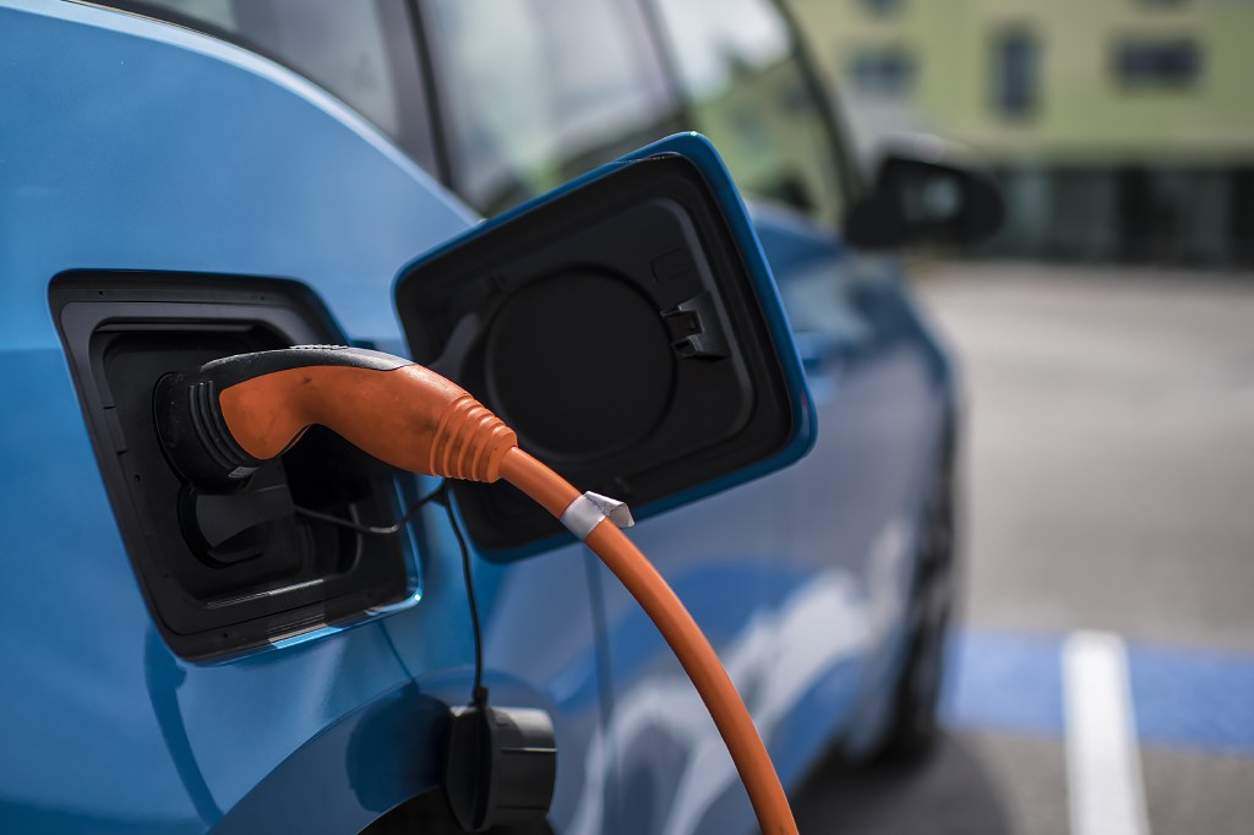As electric vehicles (EVs) continue to gain popularity, the need for efficient and convenient charging solutions becomes increasingly important so here is 5 tips for charging an Electric Vehicle More Easily
The transition from traditional fossil-fueled cars to EVs represents a significant step towards a greener and more sustainable future.
Some EV owners may encounter challenges when it comes to charging their vehicles. In this blog post, we will explore five practical tips to help you charge your electric vehicle more easily and make the most out of your electric driving experience.
- Install a Home Charging Station:
One of the most effective ways to enhance your EV charging experience is by installing a home charging station. Having a dedicated charging point at your residence allows you to charge your vehicle overnight or whenever it’s convenient for you.
Home charging stations offer faster charging speeds compared to regular wall outlets, making it convenient for daily charging. Furthermore, it ensures you start each day with a fully charged battery, eliminating any range anxiety.
- Plan Ahead Using Charging Apps:
Before embarking on a long journey, it’s essential to plan your charging stops along the way. Utilize charging apps and websites that provide real-time information about nearby charging stations, their availability, and charging speeds.
These apps often include user reviews and ratings, which can help you choose the most reliable charging points. Planning your route and charging stops in advance ensures a smoother and stress-free journey.
- Take Advantage of Off-Peak Charging:
Electricity rates can vary throughout the day, and many utility companies offer lower rates during off-peak hours. To optimize your charging costs, schedule your EV charging during these off-peak periods.
By taking advantage of Off-Peak Charging you not only save money on electricity bills but also reduce the strain on the electrical grid during peak hours when demand is higher.
- Join Charging Networks and Loyalty Programs:
Various charging networks and loyalty programs exist, providing incentives and discounts to EV owners. Joining these programs can grant you access to a broader network of charging stations and offer reduced charging rates.
Additionally, some networks provide membership cards or smartphone apps for seamless access to their charging stations, making your EV charging experience more convenient and hassle-free.
- Maintain Your EV Battery:
Proper battery maintenance is crucial for the longevity and efficiency of your electric vehicle. Regularly check your EV’s battery health and follow the manufacturer’s guidelines for maintenance and charging.
Also avoid frequently charging your battery to 100% or letting it drain completely to preserve its health. Keeping your battery in good condition ensures it performs optimally, allowing for faster charging and longer driving ranges.
Expanding Battery Life: The 80% Rule for Electric Vehicles
As electric vehicles (EVs) gain momentum as the future of transportation, understanding how to maintain and extend the life of their batteries becomes increasingly crucial.
The 80% rule is a concept that suggests charging your EV battery up to approximately 80% of its total capacity for everyday use. This level of charge provides a balance between practical driving range and battery longevity. By not pushing the battery to its limits, you reduce the overall stress on the battery cells, thus extending their lifespan.
One simple yet effective strategy is to avoid consistently charging the battery to 100% capacity. Instead, experts recommend adhering to the 80% rule—charging your EV to around 80% on a daily basis, while reserving a full charge for longer trips.
The Stress on EV Batteries
EV batteries are the heart of an electric vehicle, providing the power necessary for smooth and efficient operation. Lithium-ion batteries, which are commonly used in EVs, have a limited number of charge and discharge cycles.
Every time the battery undergoes a full charge or discharge cycle, it experiences some level of stress, which gradually reduces its capacity over time. Consequently, constantly charging your battery to its maximum capacity can expedite its degradation.
Optimising Daily Charging
For most daily commuting and routine errands, an EV with an 80% charge is more than sufficient to meet your needs. Modern electric vehicles offer adequate driving ranges on a single charge, making the 80% rule highly practical for everyday use.
Charging to 80% and not depleting the battery below 20% helps maintain a healthy charge range, preserving the battery’s health over the long term.
Longer Trips and the 100% Charge
While adhering to the 80% rule is ideal for daily driving, there are times when a full charge is necessary. Longer trips or journeys beyond the regular driving range of your EV may require a 100% charge to ensure you reach your destination without range anxiety.
In such cases, it is perfectly acceptable to charge the battery to its maximum capacity temporarily. However, once the trip is complete, it’s advisable to revert to the 80% rule for everyday charging.
EV charging levels explained.
- Level 1 EV charging
This is the level that portable electric vehicle chargers (called Electric Vehicle Supply Equipment or EVSE), are capable of. EVSEs can be plugged into a standard household power socket, but they take hours and sometimes days to fully charge a vehicle (depending on its battery size). As Level 1 is the slowest of all EV charging levels, EVSE charging is suitable for:
- Topping up the plug-in hybrids (PHEV), which have smaller batteries
- Charging your car at work to drive home
- Emergency charging when you’re not near a more powerful EV charging station
Level 2 EV charging
This the charging level you’ll achieve if your electric vehicle is plugged into a wall box that connects it to the electrical network via specific socket, plug, and dedicated circuit. Level 2 EV charging is much faster than Level 1 charging because the wall box allows it to be done at a higher voltage and amperage. Level 2 wall box charging is suitable for:
- Topping up your electric vehicle for a few hours at a shopping centre
- Fully charging your electric vehicle overnight
Level 3 EV charging
This is the charging level that you can only expect to get from dedicated high-power EV charging stations. Level 3 charging uses direct current (DC) technology and can be more than 10 times faster than Level 2 charging. As Level 3 offers such fast charging, it is suitable for:
- Topping up your charge in the same way you’d top up your petrol
- Charging between legs of long-distance journeys
| Power source | Charging speed | Uses | |
|---|---|---|---|
| Level 1 EV charging | Standard power socket (AC) | Slow (up to 2.3kW) | PHEV charging Emergency charging for short distances. |
| Level 2 EV charging | Wall box connected to a standard power socket (AC) | Fast (up to 22kW) | Multi-hour charging for commutes Overnight charging for a full battery |
| Level 3 EV charging | Dedicated high-power EV charging stations (DC) | Ultra-rapid (up to 350kW) | 15-minute charging for commutes2-3 hour charging for a full battery |

The five most-popular car charging locations
According to reports thousands of EV drivers (and potential EV drivers) across Europe, these are the five most popular places to charge an electric car:
1. Electric car charging at home
At an impressive 64 percent, charging at home takes the lead as the most favored option among various charging locations. This popularity comes as no surprise, given that charging at home offers electric car drivers the convenience of waking up to a fully charged vehicle every day, all while ensuring they only pay for the exact amount of electricity consumed at their household’s electricity price.
2. Electric car charging at work
Currently, 34 percent of existing EV drivers frequently charge their vehicles at their workplace, and there is a substantial number who express a desire to have this option available to them.
Consequently, numerous workplaces are now taking the initiative to install EV charging stations as part of their sustainability efforts, employee engagement strategies, and to accommodate the needs of EV-driving visitors and partners.
3. Public charging stations
With each passing day, cities and local governments are making significant investments in charging infrastructure, leading to the proliferation of public charging stations.
Currently, 31 percent of EV drivers happily utilise these stations, and the ratio of 7.5 electric cars per public charging point is quite favorable. However, as the sales of EVs continue to rise, we can expect a corresponding increase in the number of available public charging stations in our cities..
4. EV charging at gas stations
Charging at home or at the office sounds nice, but what if you’re on the road and looking for a quick top-up? Many fuel retailers and service stations are starting to provide fast charging (also known as level 3 or DC charging) services. 29 percent of current EV drivers already charge their car there regularly.
Additionally, while charging at the office or at home is convenient while you do other things, it can take hours before the battery is recharged. However, with fast charging stations, you can charge your battery a lot quicker (think in minutes, not hours) and be back on the road in no time.
5. Retail locations with electric car chargers
Among EV drivers, 26 percent opt to charge their cars at supermarkets, while 22 percent prefer shopping malls or department stores if the charging service is available to them.
The convenience of such locations is undeniable; picture watching a movie, enjoying a dinner, meeting a friend for coffee, or even doing grocery shopping, all while returning to a vehicle with more charge than when you initially parked it.
More and more retail locations are discovering the growing need for this service and are installing charging stations to meet the demand and acquire new customers.
EV Charging Questions People Ask
- Are EV charging stations free in Australia?
Many public EV charging stations in the ACT and across Australia offer free charging. Free EV chargers tend to be the slower AC chargers. You are most likely to find free chargers in public car parks where the only cost will be the standard fee to park your car.
- Can I plug my electric car into a regular outlet?
Level 1: Electric cars come standard with a 120-volt Level 1 portable charger. Yes, these chargers can be plugged into a simple household outlet, and don’t require any special installation.
- How long does it take to charge an electric car at a charging station?
Fast charging stations will fully charge most electric vehicles, from empty to 100%, in 4-6 hours. Big batteries of 75 kWh and up will generally take about 5-10 hours to complete charging. Fast chargers are very popular at public car parks, but also they are often used for home charging as well
- How much does it cost to fast charge an electric car?
Level 3: Also known as direct current fast chargers (DCFC), level 3 chargers are the fastest. They can charge your battery to nearly full in as little as an hour and will cost between $10 to $30 per charge. 2 The cost per kilowatt hour is approximately $0.40 to $0.60.
- Should I charge my electric car every night?
The short answer to the question is no. In general, you should not charge your electric car every night. It isn’t necessary in most cases
- How long do electric car batteries last?
– Electric car batteries last 20 years
Most manufacturers have a five to eight-year warranty on their battery. However, the current prediction is that an electric car battery will last from 10 – 20 years before they need to be replaced.
- How do I pay for EV charging Australia?
If the charging station is not free, then companies use different payment methods via mobile apps, credit cards or dedicated cards. The app will indicate the status of charge or when the EV is fully charged. Once charged, the connector cable must be unplugged from the EV.
- How long does a fully charged electric car last?
Fully charged electric car last about 100 to 400 miles on a single charge (depending on model). They are powered by an electric motor that uses energy stored in a battery (larger than the battery in a PHEV).
- Can you use an extension cord with an electric car?
Since charging an electric vehicle draws a large amount of power, an extension cord may overheat if you connect it to the charging cable. The chance of fire increases because the extension cord attempts to transmit more energy than it was made to carry.
- Can you charge an electric car in the rain?
The answer is a definite yes. Most of us are taught that water conducts electricity so it feels like an EV and rain wouldn’t mix. But the technology powering electric cars is specifically designed to protect the vehicle and drivers from any kind of electrical shock. EVs are safe to charge in all weather conditions
- Is there a portable charger for electric cars?
The EVMO-30 (208V) is a portable DC fast charger designed as a flexible alternative to stationary EV charging stations. It is a 30kW movable DC
- Do electric cars lose charge when parked overnight?
Yes, but a very minimal amount. This is because the battery is still powering some electric systems even when the car is not turned on. It’s these systems that require constant power that use a small amount of battery.
- Do electric cars have engine oil?
Electric vehicles are powered by a battery and an EV engine with an electric motor. There are no pistons, valves, or other moving parts that require lubrication, and therefore, EVs don’t use the traditional engine oil that would help maintain those parts.
- What is the top speed of electric cars?
On average though, the top speed for an electric car is usually set somewhere between 140 and 160 mph. are known for how quickly and easily they accelerate to fast speeds. However, when it comes to the maximum speed the car can go, most electric cars are made with speed limiters
- What happens if an electric car runs out of charge on the road?
In this instance you generally have the following options: To be taken to a charging point by your recovery service using a flatbed truck or towing dolly. To be given a booster charge by your recovery service. To be donated charge by other road users
- Do electric cars have reserve battery?
An electric car will give an estimated range to tell you how far your EV can travel at its current charge. Once the EV hits 0%, it will swap to reserve power. Reserve power gives you around 5 miles of range, which you should immediately use to get to your nearest charger.
Seeking Guidance from EV Dealers
Every electric vehicle is unique, and battery management systems vary across manufacturers and models. To better understand the charging requirements and nuances of your specific EV, it’s essential to consult with your EV dealer.
They can also provide valuable insights into the battery’s behavior, optimal charging practices, and any additional recommendations to maintain the health of your EV’s battery.







